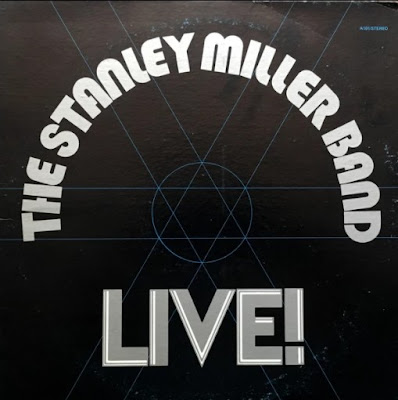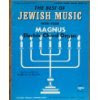And Other Easy, Fun Funeral Hits: When Abq Jew first posted The MAGNUS CHORD ORGAN Big Book of Easy Funeral Hits on his personal Facebook page - way back in July 2021 - he knew too much about funerals, a few things about music - but just about nothing about chord organs.
Ceremony at Town & Village Synagogue. Reception at the Waldorf. Really.
 |
| The Hammond Model S6 chord organ. The Model S organs were designed to have non-musicians “playing lovely organ music within 30 minutes.” |
a kind of home organ that has a single short keyboard and a set of chord buttons, enabling the musician to play a melody or lead with one hand and accompanying chords with the other, like the accordion with a set of chord buttons ....
Now, the Chord Organ was first introduced by the Hammond Organ Company in 1950. But then - in 1958 - along came Magnus. As Wikipedia relates.
The Magnus Harmonica Corporation (originally the International Plastic Harmonica Corporation) was founded in 1944 in New Jersey by Danish immigrant Finn Magnus (1905–1976).
First supplying American troops in World War II, and later marketed to children and other beginners, the company's harmonicas (as well as its accordions, bagpipes, and mechanical reed organs) used a then-unique molded-plastic reed comb.
The styrene-based plastic construction resulted in lower cost, greater durability, and a distinct sound compared to other free reed aerophones with metal reeds.In 1958, Magnus joined with television salesman Eugene Tracey, and their company went on to sell millions of inexpensive electric chord organs and song books until the late 1970s under the name Magnus Organ Corporation.
At its peak, Magnus employed over 1,800 workers in Linden, New Jersey, including a "mother's shift" during school hours and a "work release" program for non-violent inmates of the nearby Rahway State Prison.
Abq Jew knows you want to see the inner workings of one of these babies. How could something so ... plastic ... sound so good? So here's a YouTube video.
Abq Jew knows you're going to want to learn to play songs on your Magnus. And where, Abq Jew hears you ask, would one (or two or more) find such compendia of chord organ music? Why - on Amazon, of course!
Yes, they've got Music for Lovers, Music for the Irish, Folk & Western Songs, and even ... wait for it ...
The Best of Jewish Music
with Your Magnus Electric Chord Organ
So. With so many song books available ...
How about The MAGNUS CHORD ORGAN Big Book of Easy Funeral Hits? Which includes such easy, fun funeral hits as:
While many of these easy, fun funeral hits would fit right in at a Jewish funeral ... well, no, they wouldn't. Or any other type of funeral. That's because ...
The MAGNUS CHORD ORGAN
Big Book of Easy Funeral Hits
is a parody (i.e., it ain't real).
How does Abq Jew know this? He researched it! And found a wonderful blog post by Jim Liska titled - Grandma Had Secrets. In which Mr Liska deals with hospitals, the Romanian-born essayist Emil Cioran, and (naturally) despair, then states:
Some of you may have heard of the Magnus Chord Organ; the more fortunate of you probably haven’t. Some of you may have even owned one or might still. Others may recall a kooky relative with lots of cats who had one.
The instrument, real in a toy-like way, was first introduced in 1958 to people whose motivation for wanting one remains unknown and yet is somehow suspect.
The electric instrument took absolutely no talent or specific ability to play and it created a sound far worse than any record player, which by 1958 was a pretty common appliance in American homes. The attraction, perhaps, was that one could pretend to be playing actual music on the Magnus Chord Organ, thereby amazing family, friends and neighbors. Cats, too, perhaps.
The instrument, available in both laptop and tabletop models, featured a two- or three-octave keyboard for the right hand and a “chord pad” for the left. Though there were variations depending on the model one chose, the pad featured several buttons that could be pushed in various combinations to create major and minor chords to accompany the melodies played on the keyboard.
Millions of these organs were sold over the course of a couple of decades. And to keep people playing them, the New Jersey-based company created a series of “play-by-numbers” songbooks designed specifically for the instrument.
Predictably, many of the songbooks had religious themes, but there were others like Let’s All Sing, Swingin ‘N Singin and the internationally themed Songs of Many Lands and South of the Border. There were also several based on the music of Burt Bacharach and Hal David, which must have been as humiliating as it was lucrative.
The best offering was created by a Chicago-based entrepreneur whose name is unknown but whose website is phil-are-go.blogspot.com.
He recognized the need for the Big Book of Easy Funeral Hits, for which most of us should be thankful. Featuring a “simple one-figure grief chord chart,” the book features such enduring classics as “Who Gets What,” “Shut Up and Mourn,” “Well That’s Over,” “I Just Knew I’d See You Here” and “Grandma Had Secrets.”
Well. Now we're getting somewhere.
Once again - Abq Jew did the research, so you don't have to! You're welcome!
And discovered that Phil Are Go is actually Phil Largo. Who has a Twitter handle @philarego and - and this is important - has an Elmhurst-based shop on Redbubble. With a lot of his designs emblazoned on clothing, stickers, and wall art.
Good Shabbos, New Mexico!














No comments:
Post a Comment